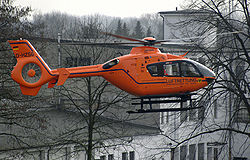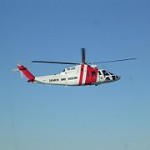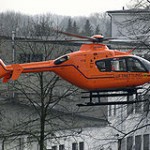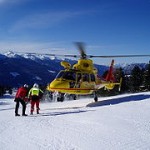“Heavy-lift”
A final area of distinction which requires mention is the operation of truly large aircraft, generally fixed-wing in nature, as air ambulances. In the past the infrequency of demand for such a service in the civilian sphere meant that the majority of such operations are confined to the military, which requires them in support of overseas combat operations. Military organizations with a capability of this type of specialized operation include the United States Air Force, the German Luftwaffe, and the British Royal Air Force. Each operates aircraft staffed by physicians, nurses, and corpsmen/technicians, and each has the capability of providing long distance transport, along with all required medical support, to dozens of injured persons simultaneously.
However, in recent years exceptions to the “military-only” rule have grown with the need to quickly transport injured persons to facilities providing higher levels of care or to repatriate individuals. ADAC, the German automobile club, and Mercy Jets, use both large and small fixed wing aircraft configured to provide levels of care that can be found in Trauma centers for individuals who subscribe to their own health insurance or affiliated travel insurance and protection plans.
Standards
Aircraft and flight crews
In most jurisdictions, air ambulance pilots must have a great deal of experience in piloting their aircraft because the conditions of air ambulance flights are often more challenging than regular non-emergency flight services. After a spike in air ambulance crashes in the United States in the 1990s, the U.S. government and the Commission on Air Medical Transportation Systems (CAMTS) stepped up the accreditation and air ambulance flight requirements, ensuring that all pilots, personnel, and aircraft meet much higher standards than previously required. The resulting CAMTS accreditation, which applies only in the United States, includes the requirement for an air ambulance company to own and operate its own aircraft. Some air ambulance companies, realizing it is virtually impossible to have the correct medicalized aircraft for every mission, instead charter aircraft based on the mission-specific requirements.
While in principle CAMTS accreditation is voluntary, a number of government jurisdictions require companies providing medical transportation services to have CAMTS accreditation in order to be licensed to operate. This is an increasing trend as state health services agencies address the issues surrounding the safety of emergency medical services flights. Some examples are the states of Colorado, New Jersey, New Mexico, Utah, and Washington. According to the rationale used to justify the state of Washington’s adoption of the accreditation requirements, requiring accreditation of air ambulance services provides assurance that the service meets national public safety standards. The accreditation is done by professionals who are qualified to determine air ambulance safety. In addition, compliance with accreditation standards is checked on a continual basis by the accrediting organization. Accreditation standards are periodically revised to reflect the dynamic, changing environment of medical transport, with considerable input from all disciplines of the medical profession.
Other U.S. states require either CAMTS accreditation or a demonstrated equivalent, such as Rhode Island, and Texas, which has adopted CAMTS’ Accreditation Standards (Sixth Edition, October 2004) as its own. In Texas, an operator not wishing to become CAMTS accredited must submit to an equivalent survey by state auditors who are CAMTS-trained. Virginia and Oklahoma have also adopted CAMTS accreditation standards as their state licensing standards. While the original intent of CAMTS was to provide an American standard, air ambulance services in a number of other countries, including three in Canada and one in South Africa, have voluntarily submitted themselves to CAMTS accreditation.
Medical staffing
The makeup of the medical crew staffing an air ambulance varies depending on country, area, service provider, and type of air ambulance. In services operating under the Anglo-American model of service delivery, the helicopter is most likely to be used to transport patients, and the crew may consist of Emergency Medical Technicians, Paramedics, flight nurses, a Respiratory Therapist, or in some cases, a physician. Services with a primary focus on critical care transport are more likely to be staffed by physicians and nurses. In the Franco-German model, the aircraft is much more likely to be used as a method of delivering high level support to ground-based EMS. In these cases, the crew generally consists of a physician, often a surgeon, anesthetist, trauma specialist or similar specialty, accompanied by a specially trained advance care paramedic or nurse. In these cases, the object is the rapid delivery of definitive care, occasionally even performing emergency surgical procedures in the field, with the eventual transport of the patient being accomplished by ground ambulance, not the helicopter.



